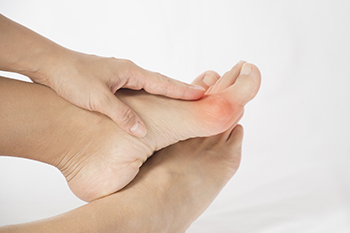
The Achilles tendon connects the heel with the two large muscles of the calf, allowing the bending and flexing of the feet. As the largest tendon in the body, the Achilles tendon has the duty of raising the foot for walking, running, and other activities. In short, it is a workhorse. As a result, it is prone to overuse injuries. One of the main causes of Achilles tendonitis is overuse. This condition is especially prevalent among runners and other athletes who may do too much, too soon. Symptoms include inflammation, a crackling sound when the ankle is moved, swelling, and pain when walking uphill or climbing the stairs. In the acute form of Achilles tendonitis sudden pain, swelling, and difficulty walking will occur. With chronic Achilles tendonitis, symptoms like pain and difficulty walking may develop more slowly. If you are experiencing any of these symptoms at the back of the heel, it is suggested that you visit a podiatrist at your earliest convenience.
Achilles tendon injuries need immediate attention to avoid future complications. If you have any concerns, contact one of our podiatrists of Associates in Podiatry, PC. Our doctors can provide the care you need to keep you pain-free and on your feet.
What Is the Achilles Tendon?
The Achilles tendon is a tendon that connects the lower leg muscles and calf to the heel of the foot. It is the strongest tendon in the human body and is essential for making movement possible. Because this tendon is such an integral part of the body, any injuries to it can create immense difficulties and should immediately be presented to a doctor.
What Are the Symptoms of an Achilles Tendon Injury?
There are various types of injuries that can affect the Achilles tendon. The two most common injuries are Achilles tendinitis and ruptures of the tendon.
Achilles Tendinitis Symptoms
- Inflammation
- Dull to severe pain
- Increased blood flow to the tendon
- Thickening of the tendon
Rupture Symptoms
- Extreme pain and swelling in the foot
- Total immobility
Treatment and Prevention
Achilles tendon injuries are diagnosed by a thorough physical evaluation, which can include an MRI. Treatment involves rest, physical therapy, and in some cases, surgery. However, various preventative measures can be taken to avoid these injuries, such as:
- Thorough stretching of the tendon before and after exercise
- Strengthening exercises like calf raises, squats, leg curls, leg extensions, leg raises, lunges, and leg presses
If you have any questions please feel free to contact our offices located in Pittsburgh-South Hills, and Pittsburgh-Bellevue, PA . We offer the newest diagnostic tools and technology to treat your foot and ankle needs.









